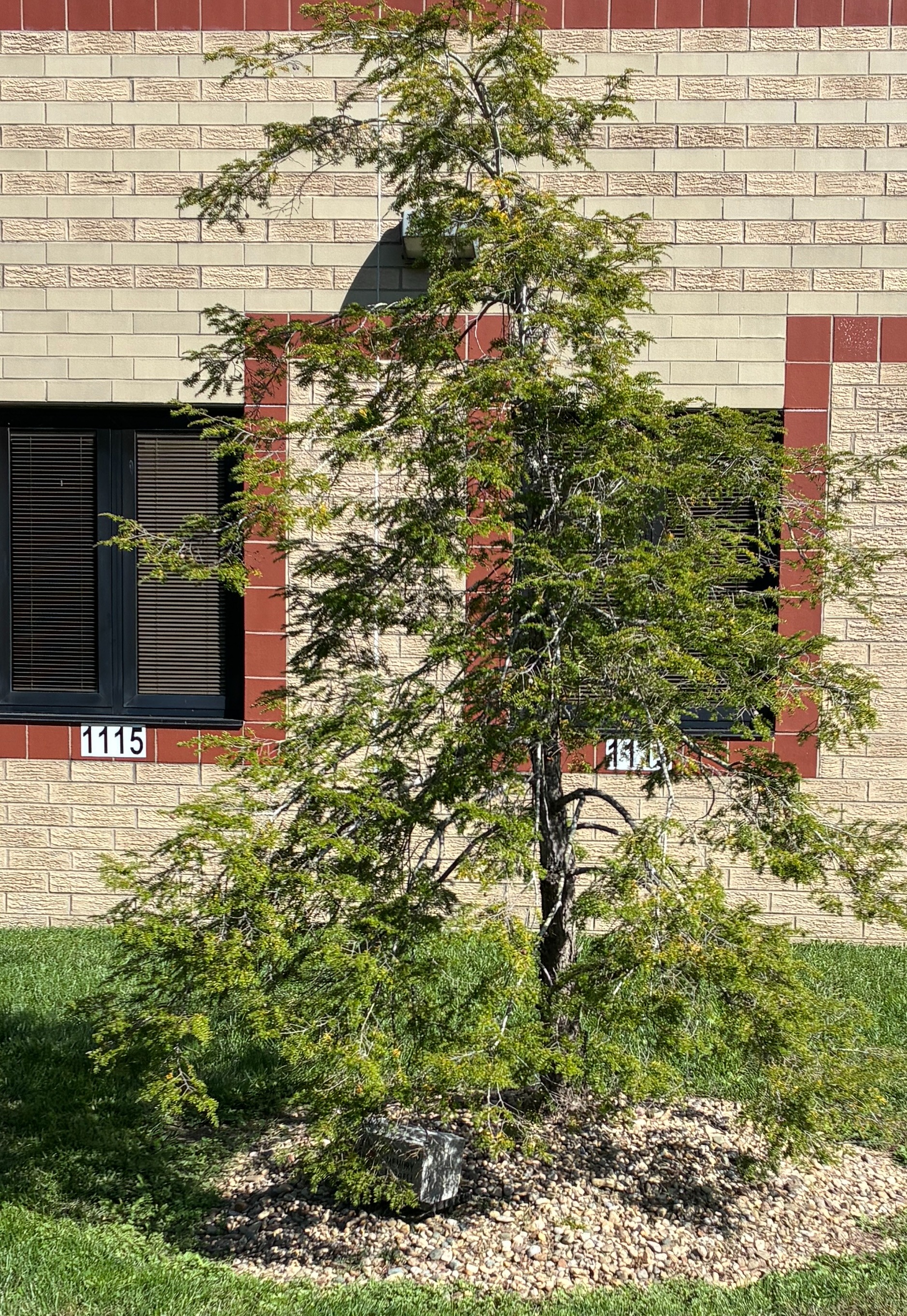
Photo Credits: Dr. Loretta W. Harvey
Scientific Name: Tsuga canadensis (L.) Carr.
Common Name: Eastern Hemlock or Canadian Hemlock
Type: Evergreen
Family: Pinaceae
Native Range: Eastern North America
USDA Zone: 3 to 7
Height: 40 to 70 feet
Spread: 25 to 35 feet
Bloom Time: Late April to June
Bloom Description: The tree is monoecious, producing separate male and female reproductive structures on the same tree. Male "flowers" (strobili) are small, yellowish, round, and cone-like, about 1/4 to 1/3 inch long.Female "flowers" (strobili) are small, pale green and inconspicuous, oval-elliptic, about 3/4 inch long, located at the tips of new twigs. They develop into small, woody cones.
Sun: Part shade to full shade
Water: Medium; requires average to moist, well-drained soil. Intolerant of both prolonged drought and standing wet soil/poor drainage. Regular watering is essential, especially when young.
Maintenance: Apply a 2–3 inch layer of organic mulch (like pine bark or wood chips) around the tree, keeping it a few inches away from the trunk. This helps to conserve soil moisture, keep the shallow root system cool, and maintain an acidic soil environment. Apply a slow-release, acid-forming fertilizer in the spring only if the foliage is pale or growth is weak, and after a soil test confirms a nutrient deficiency. Look for a balanced, slow-release, or acid-forming fertilizer (like a 10-10-10).
Leaf Type/Shape: Short ( inch or cm), flat, soft, evergreen needles. They are shiny dark green above and feature two prominent white stripes (of stomata) on the underside. They are attached to the twig by a tiny, slender stalk and appear arranged in flat sprays.
Attracts: Provides essential winter cover for wildlife such as deer
Tolerate: Highly shade tolerant, often dominating the understory of mixed forests and creating unique, cool, moist ecosystems vital for certain wildlife and aquatic habitats.
Invasive: No
Climate: Eastern Hemlocks are one of the most shade-tolerant conifers. They perform best in partial to full shade or dappled light. In hotter climates, afternoon shade is essential to prevent heat stress and sun scorch. They can tolerate full sun in cooler climates, but only if the soil moisture is consistently maintained.
Noteworthy Characteristics: Norway Spruce has the smallest cones of any North American conifer, only about inch long. They are ovoid (egg-shaped), light brown, and pendulous (drooping) on slender stalks. Typically a dense, pyramidal conifer, with horizontal branches and a very distinct drooping terminal shoot (leader). Its fine, feathery foliage gives it a delicate, lacy appearance. Initially gray-brown and smooth, becoming thick, red-brown with wide ridges and deep furrows on older trees. The inner bark may show purplish streaks when broken.
Problems: Hemlock Woolly Adelgid (HWA), Adelges tsugae. This is an invasive, sap-sucking insect from East Asia that has caused widespread and severe mortality throughout the southern and central parts of the Eastern Hemlock's range. The pest appears as small, cottony masses on the undersides of the twigs. The HWA is responsible for a significant population decline (-) and threatens to eliminate hemlock stands across much of its range. Control efforts often involve systemic insecticide treatments to protect high-value and ecologically important trees.
Economic Uses: The wood is moderately light and used for lower-grade products, including pulp for paper manufacturing (primarily newsprint and wrapping papers), framing and construction elements (sheathing, subflooring, roofing), railroad ties, and mulch (bark). Eastern Hemlock is a very popular ornamental plant for landscaping due to its graceful, fine-textured, and pyramidal form. Native Americans historically used the needles to make a Vitamin C-rich tea to prevent scurvy. The inner bark (cambium) was used as a base for breads and soups during times of famine. The bark was also used to create dyes.
Donated by: Gary, Tim, Kathy and Barbara
In memory of: Mr. & Mrs. Farrell Vaughters
Date Planted:
Arboretum Catalog Number: 0006
Photo Credits: Dr. Loretta W. Harvey

